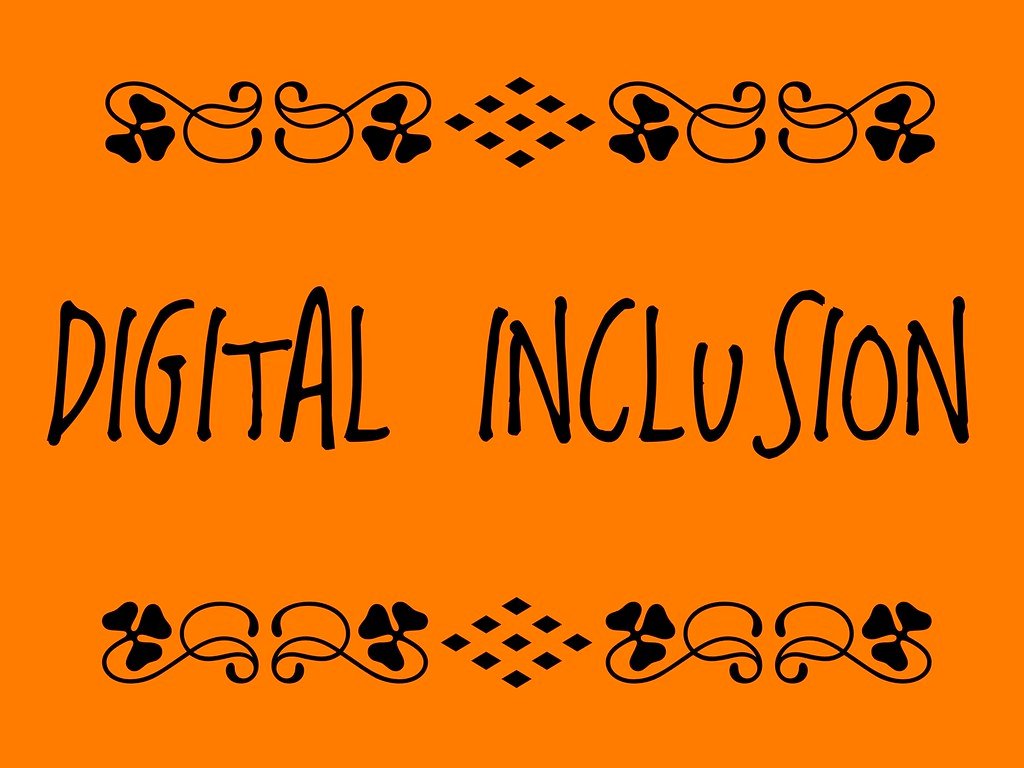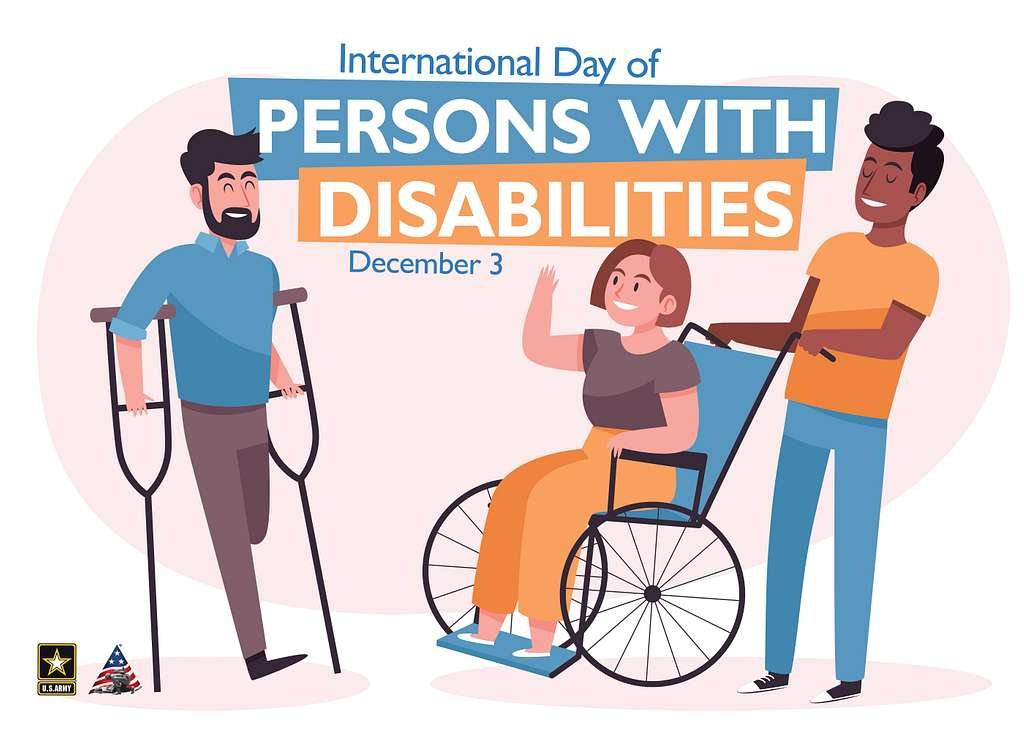Imagine a world where the barriers to digital access and inclusion cease to exist. A world where everyone, regardless of ability or disability, can effortlessly navigate the vast realm of the internet. In today’s digital era, where knowledge is power and connectivity is key, the need to bridge the gap between technology and accessibility has never been more crucial. The journey towards unlocking digital inclusion begins with one crucial component – mastering content accessibility and harnessing the untapped potential of assistive technologies. Join us as we embark on a transformative exploration, delving into the realm of equal access, innovative solutions, and the empowerment of individuals who have often been overlooked. Welcome to the realm of unlocking digital inclusion, where content accessibility and assistive tech hold the key to an inclusive digital future.
Table of Contents
- Understanding the Importance of Digital Inclusion and Accessibility
- Overcoming Barriers with Assistive Technology for Enhanced Accessibility
- Creating Content that Prioritizes Accessibility: Best Practices and Guidelines
- Empowering Individuals with Disabilities: Key Technologies and Innovations
- Q&A
- Future Outlook

Understanding the Importance of Digital Inclusion and Accessibility
One of the key factors in today’s digital world is ensuring that everyone has access to and can navigate online content. Digital inclusion and accessibility are essential in creating an inclusive society where people of all abilities can participate fully in the digital space. By unlocking digital inclusion, we can empower individuals and overcome barriers that prevent them from enjoying the benefits of technology and the internet.
Content accessibility plays a vital role in digital inclusion by making sure that online materials are accessible to individuals with disabilities. This includes making web pages, documents, and multimedia content perceivable, operable, understandable, and robust. It means designing content in a way that is compatible with assistive technologies that people with disabilities use, such as screen readers, voice recognition software, and alternative input devices. Consider incorporating alt text for images, captions for videos, and clear headings and labels to enhance the accessibility of your content. By following accessibility guidelines, we open up a world of possibilities for individuals with disabilities, allowing them to interact with information and services that were once inaccessible to them.
Overcoming Barriers with Assistive Technology for Enhanced Accessibility
Assistive technology has become an invaluable tool for individuals with disabilities, enabling them to overcome barriers and enhance their overall accessibility to digital content. With the rapid advancement of technology, barriers to accessibility are being dismantled, opening doors for individuals with diverse needs. Assistive technology serves as the key to unlock digital inclusion, fostering independence and equal opportunities.
One of the primary barriers that assistive technology helps overcome is the inability to access visual content. For individuals with visual impairments, screen readers are a game-changer. These software applications read aloud text displayed on a computer screen, allowing users to navigate websites, read documents, and even interact with multimedia content. Speech recognition technology also plays a crucial role in enhancing accessibility for individuals with mobility impairments, as it enables them to control computers and mobile devices using only their voice.

Creating Content that Prioritizes Accessibility: Best Practices and Guidelines
Creating content that prioritizes accessibility is crucial in promoting digital inclusion and ensuring that everyone can access and engage with your online material. By following best practices and guidelines, you can make your content more inclusive and accessible for individuals with disabilities. Here are some key tips to help you unlock digital inclusion and master content accessibility:
1. Structure your content using HTML: Using proper heading structure (h1, h2, etc.) and semantic markup (such as for emphasis) helps individuals using assistive technologies navigate and understand your content more effectively.
2. Provide alternative text for images: Adding descriptive alt text allows individuals who are visually impaired to understand what the image represents. Keep it concise and descriptive, highlighting the essential information.
3. Caption videos and provide transcripts: Videos play a crucial role in content creation, but they can be a challenge for individuals with hearing impairments. Adding captions and providing transcripts ensures that the content is accessible to everyone.
4. Use color with caution: Color alone should not be the sole means of conveying information. Ensure that your content can still be understood when viewed in grayscale or without color distinction.
5. Consider font size and readability: Opt for an easily readable font and make sure it is resizable without affecting the layout. Additionally, avoid using busy or distracting backgrounds that can make it difficult for individuals with cognitive disabilities to focus on the content.
By implementing these best practices and guidelines, you can create content that is accessible to a wider audience and contribute to building a more inclusive digital environment. Remember, accessibility benefits everyone, and prioritizing it ensures that everyone can engage with your content on an equal footing, regardless of their abilities.
Empowering Individuals with Disabilities: Key Technologies and Innovations
Digital inclusion is essential in today’s society, ensuring that individuals with disabilities have equal access to information and opportunities. Content accessibility and assistive technologies play a crucial role in empowering individuals with disabilities, providing them with the tools they need to thrive in a digital world.
One key technology that promotes digital inclusion is content accessibility. This involves making digital content, such as websites and documents, easily accessible to individuals with disabilities. Assistive technologies, like screen readers and magnifiers, help individuals with visual impairments navigate and comprehend digital content. Additionally, captioning and transcripts benefit individuals with hearing impairments, ensuring they can fully engage with videos and audio content. By implementing content accessibility practices, we can create a more inclusive online environment where everyone can participate and access information effortlessly.
Another innovation that empowers individuals with disabilities is assistive technology. These devices and software applications are specifically designed to enhance independence and accessibility for individuals with disabilities. For example, text-to-speech software enables individuals with visual impairments to listen to written content, allowing them to participate in online learning or read books. Speech recognition software, on the other hand, allows individuals with mobility impairments to control their devices hands-free. These assistive technologies open doors to education, employment, and communication, enabling individuals with disabilities to overcome barriers and fully participate in society.
In the quest for digital inclusion, it is crucial to prioritize content accessibility and embrace assistive technologies. Through these key technologies and innovations, we can unlock the potential of individuals with disabilities, providing them with the tools they need to navigate the digital landscape and maximize their opportunities for success. Let’s work together to ensure that everyone, regardless of ability, can fully engage and thrive in an inclusive digital world.
Q&A
Q: What does it mean to unlock digital inclusion?
A: Unlocking digital inclusion refers to the process of ensuring that individuals with disabilities have equal access and opportunities to fully participate in the digital world. It involves breaking down barriers, making content accessible, and utilizing assistive technology to create an inclusive online experience for everyone.
Q: How can content accessibility be mastered?
A: Mastering content accessibility involves adopting inclusive design practices that consider the needs of different users. It requires creating digital content that is perceivable, operable, understandable, and robust, following accessibility guidelines such as WCAG (Web Content Accessibility Guidelines). By prioritizing accessibility from the start, content creators can ensure their work reaches the widest audience possible.
Q: What is assistive technology?
A: Assistive technology refers to a wide range of devices, software, or equipment that helps individuals with disabilities interact with digital content effectively. It includes screen readers, speech recognition software, alternative keyboards, eye-tracking devices, and more. These tools empower people with disabilities to navigate and engage with online content independently.
Q: Why is digital inclusion important?
A: Digital inclusion is crucial because it promotes equality, independence, and empowerment for individuals with disabilities. It allows them to access educational resources, employment opportunities, healthcare information, and social networks, among others. By embracing digital inclusion, society can ensure that no one is left behind in the rapidly evolving digital landscape.
Q: How can businesses and organizations promote digital inclusion?
A: Businesses and organizations can promote digital inclusion by adopting accessibility practices and guidelines when designing and developing websites, apps, and other digital content. It is essential to create user interfaces that are flexible, customizable, and compatible with assistive technology. Providing accessible alternatives, such as text transcripts for audio and video content, also plays a significant role in fostering digital inclusion.
Q: What are some challenges in achieving digital inclusion?
A: One challenge in achieving digital inclusion is the lack of awareness and understanding surrounding accessibility issues. Many content creators may not be familiar with the guidelines and best practices needed to make their digital content accessible. Additionally, the rapid advancement of technology sometimes outpaces accessibility solutions, resulting in temporary gaps. It is crucial to address these challenges through education, resources, and ongoing improvement efforts.
Q: How can individuals contribute to digital inclusion efforts?
A: Individuals can contribute to digital inclusion efforts by advocating for accessibility, both as consumers and creators of digital content. By reporting inaccessible websites or apps, supporting businesses that prioritize accessibility, and spreading awareness about the importance of digital inclusion, individuals can help drive positive change. Additionally, learning about assistive technology and applying inclusive design principles in personal projects can further promote digital inclusion.
Q: What does the future of digital inclusion look like?
A: The future of digital inclusion holds great potential for innovation and progress. As technology continues to advance, the accessibility landscape is expected to improve dramatically. Innovations in artificial intelligence, machine learning, and automation have the potential to enhance assistive technology and content accessibility further. With continued efforts, an inclusive digital world can be achieved, benefiting individuals with disabilities and society as a whole.
Future Outlook
As we conclude this journey into the realm of digital inclusion, we can’t help but marvel at the power of technology to reshape our world. The accessibility revolution is paving the way for an inclusive digital landscape where everyone, regardless of their abilities, can fully participate and thrive.
Mastering content accessibility and harnessing the potential of assistive technology has never been more crucial. As the digital realm becomes increasingly intertwined with our daily lives, it is our responsibility to ensure that no one is left behind. We have the tools, the knowledge, and the creativity to unlock the doors of digital inclusion for all.
Imagine a world where a visually impaired individual can effortlessly browse the internet, using screen readers that provide them with a rich and engaging experience. Imagine a world where individuals with motor disabilities can navigate websites and applications with ease, empowered by innovative assistive tech solutions. This utopian vision is not a distant dream, but a tangible reality within our grasp.
In this article, we delved into the importance of web accessibility, highlighting the significant strides that have been made towards creating a more inclusive digital landscape. From captioning videos to providing alt text for images, each step we take towards accessibility showcases our commitment to a fair and equitable digital future.
But this is not the end. The pursuit of accessibility and digital inclusion is an ongoing journey, one that requires constant innovation, collaboration, and advocacy. As technology continues to evolve, we must adapt and strive to ensure that digital platforms are accessible to all, regardless of cognitive, sensory, or physical abilities.
So let us embark on this transformative endeavor together. Let us empower individuals, bridge the accessibility gap, and shift the paradigm of inclusivity within the digital sphere. By embracing accessibility principles and investing in assistive technology, we can create a future where everyone can fully engage with the vast wonders of the digital world.
Remember, the power of digital inclusion lies within each of us. Embrace accessibility, champion diversity, and unlock the full potential of technology for a future where no one is left behind. Let us strive for a world where everyone can contribute, learn, and connect, regardless of the barriers they may face. Together, we can truly unlock the gates of digital inclusion, shaping a brighter and more inclusive tomorrow.

